Welcome to Moda!
Feed Sacks Go Abroad
Feed Sacks Go Abroad
There’s nothing better than spending time with people who love fabric. Unless it’s spending time with them…in Holland.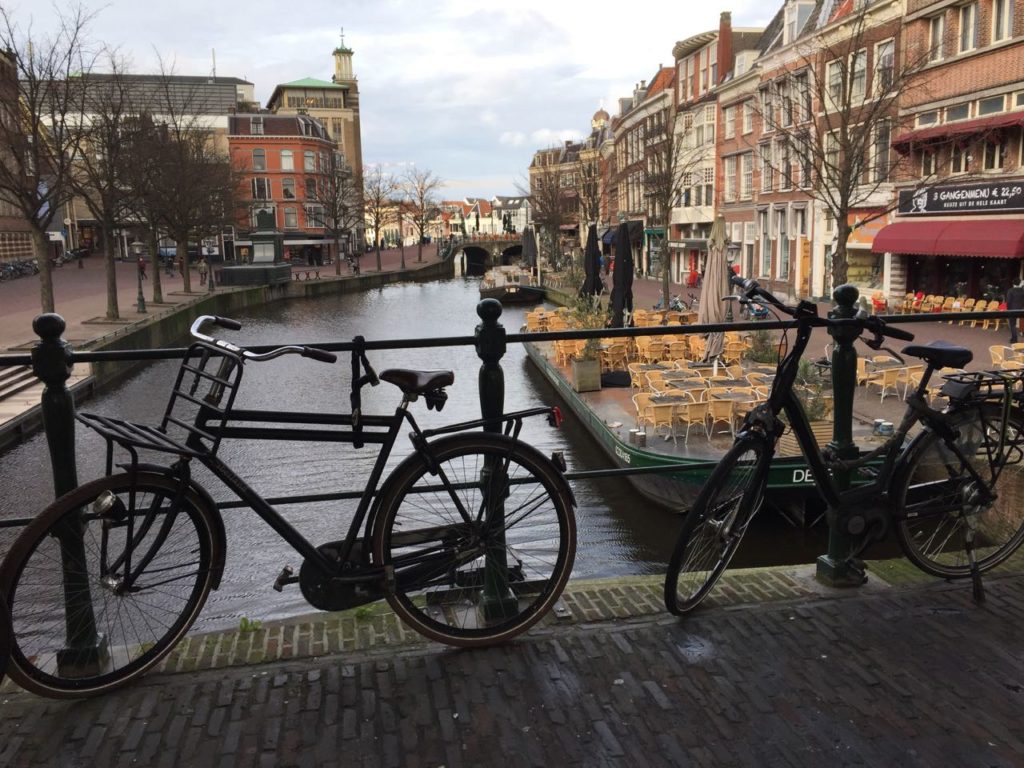
Earlier this month I had the good fortune to do just that when I visited Leiden, a lovely city about 30 minutes by train from Amsterdam. Home to one of the oldest universities in Europe, it features the requisite windmills, canals, and friendly people.
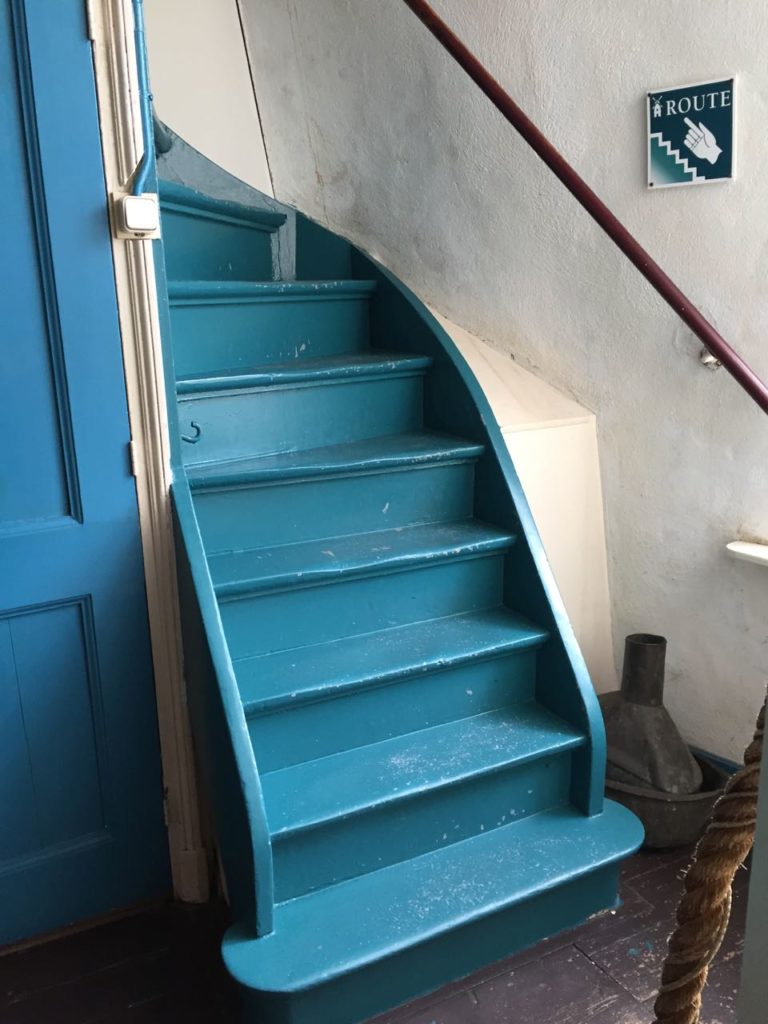 Dutch blue steps lead to the top of the De Valk windmill in Leiden
Dutch blue steps lead to the top of the De Valk windmill in Leiden
But it’s also home to the Textile Research Centre (TRC) and its more than 19,000 objects that include clothing and other textiles from around the world.
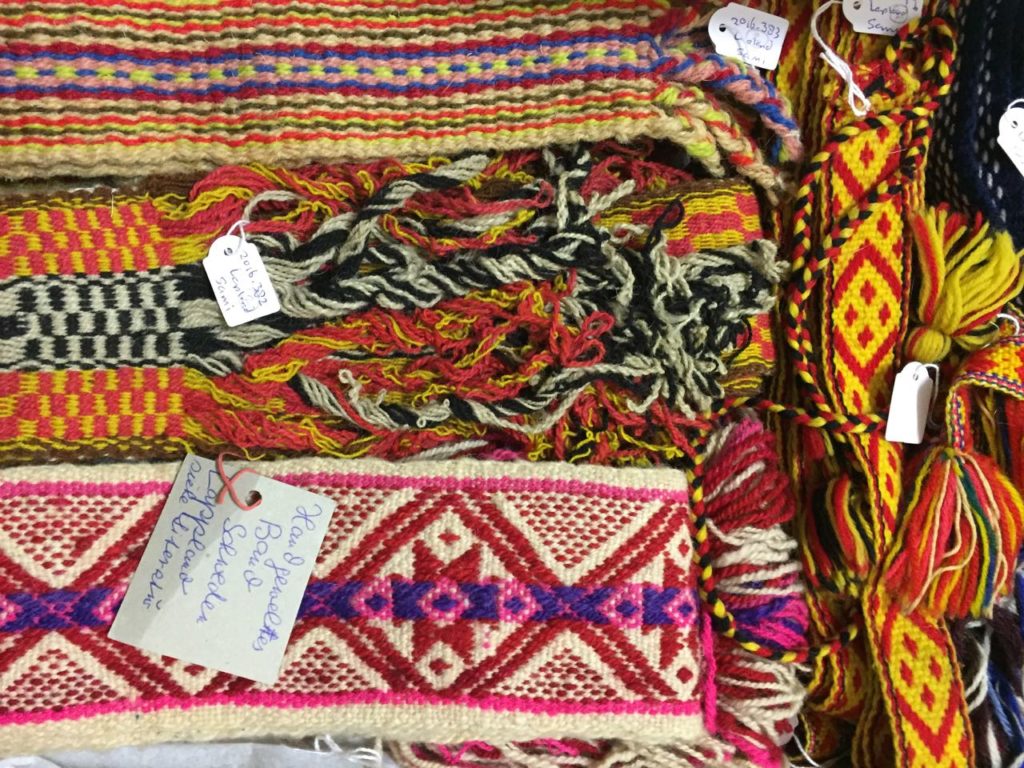 These belts from Lapland are in the TRC collection
These belts from Lapland are in the TRC collection
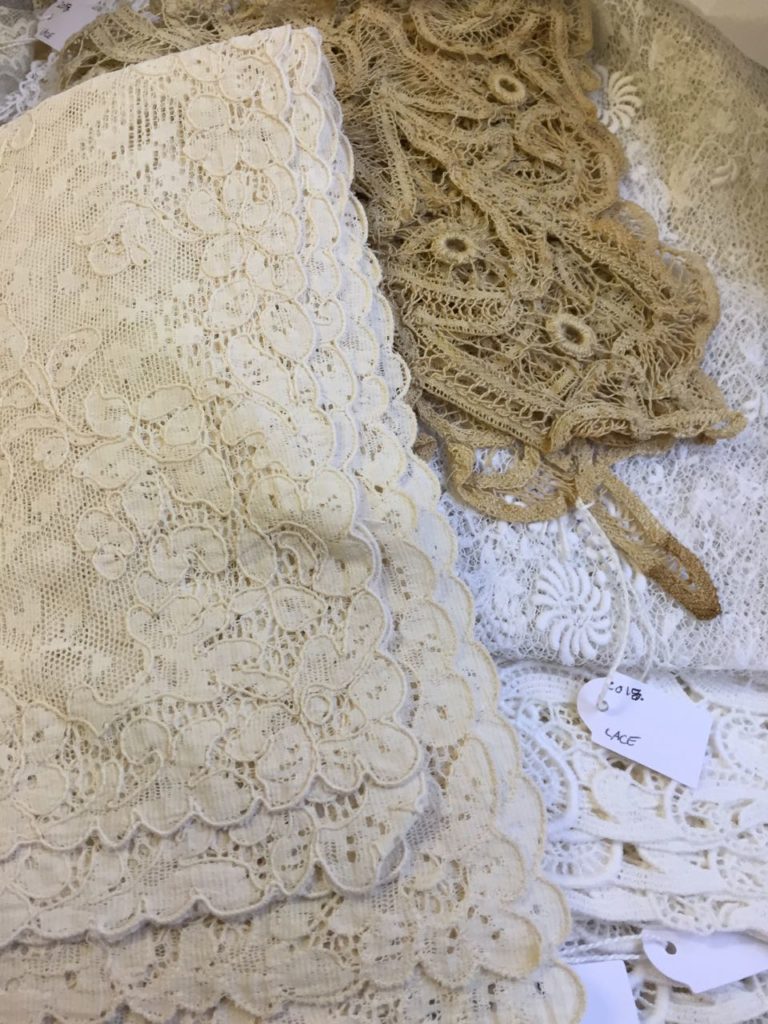 Lace from the collection of the TRC
Lace from the collection of the TRC
Last year, in a group of donated fabrics, the TRC’s founder and director Gillian Vogelsang-Eastwood found 36 feed sacks. Patterned feed sacks weren’t made in Holland and as Gillian studied their history she was intrigued and wanted to share the feed sack story with others. In six short months she acquired quilts and clothing stitched from feed sacks, as well as additional sacks and ephemera (some donated by American collector Sherry Cook and author Gloria Nixon).
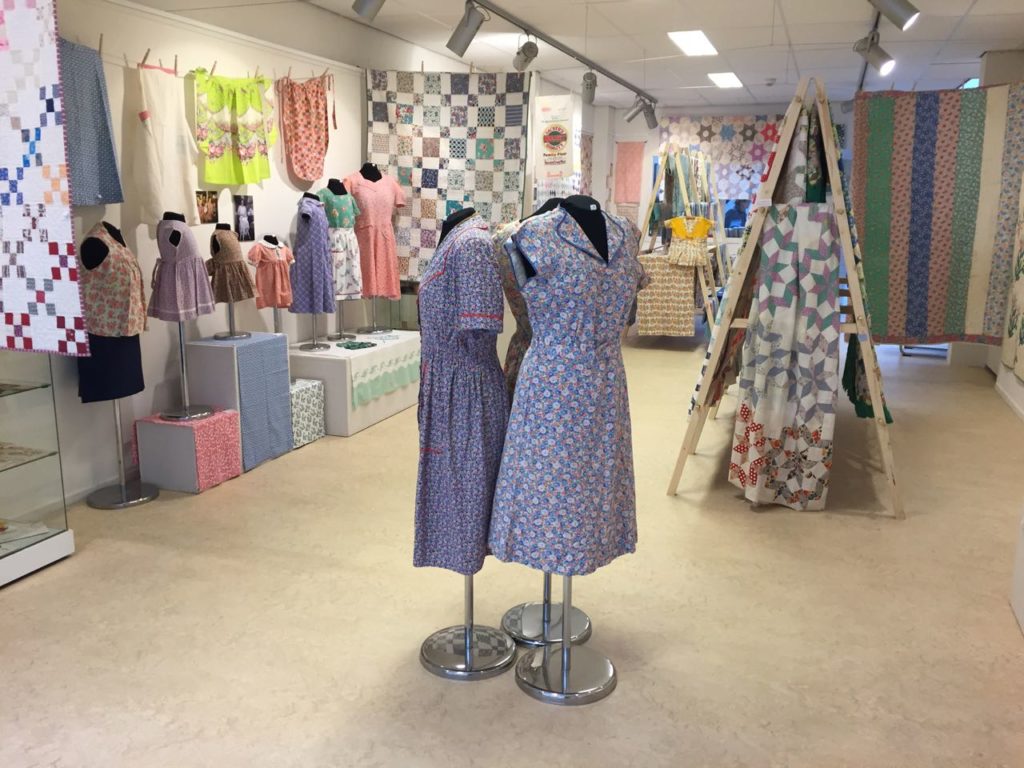
Support for the exhibit came from a small grant from the American Embassy and required that the TRC bring an American with feed sack expertise for a week of lectures and workshops. I got an email from Gillian—could I recommend anyone? I was pretty sure she could hear me jumping up and down, waving my hands and shouting “ME! ME! ME!” across the ocean. And so it was I went.
During the week I led tours, gave talks about feed sack history, and taught two workshops on feed-sack related techniques. (I also did a little giveaway with Feed Sacks: True Blue and had the pleasure of seeing some students, including two in the photo below, string-piece with True Blue scraps.)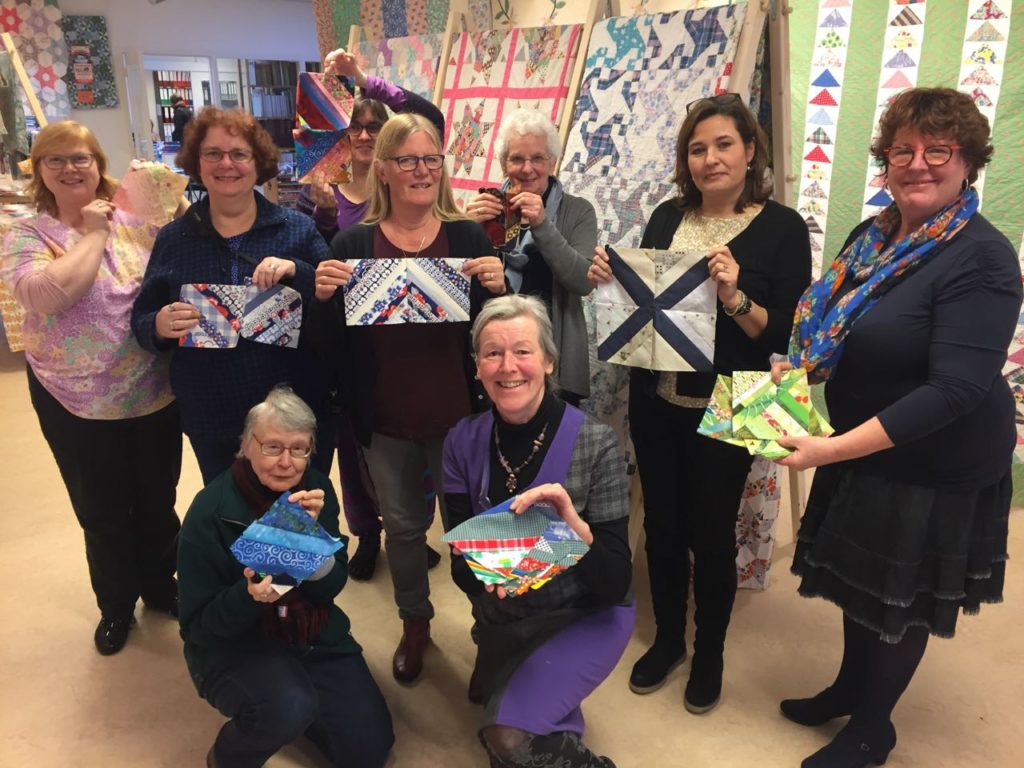
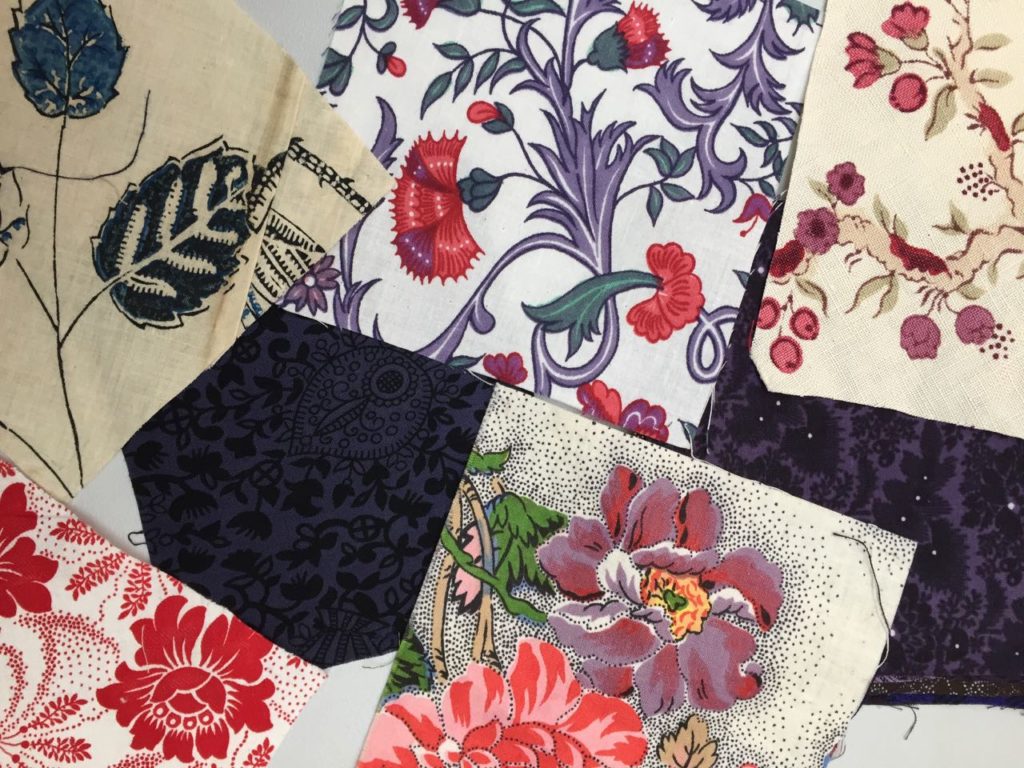 One student used these gorgeous scraps of her traditional Dutch fabrics from Staphorst Overijssel.
One student used these gorgeous scraps of her traditional Dutch fabrics from Staphorst Overijssel.
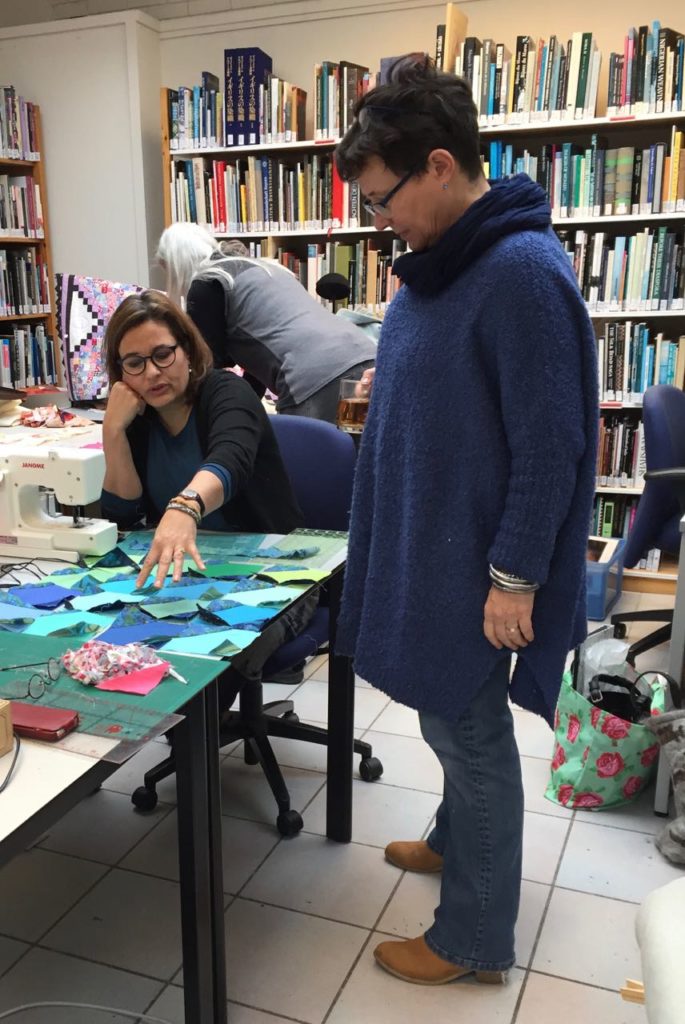 Students discuss block layout in a Stitch and Flip class
Students discuss block layout in a Stitch and Flip class
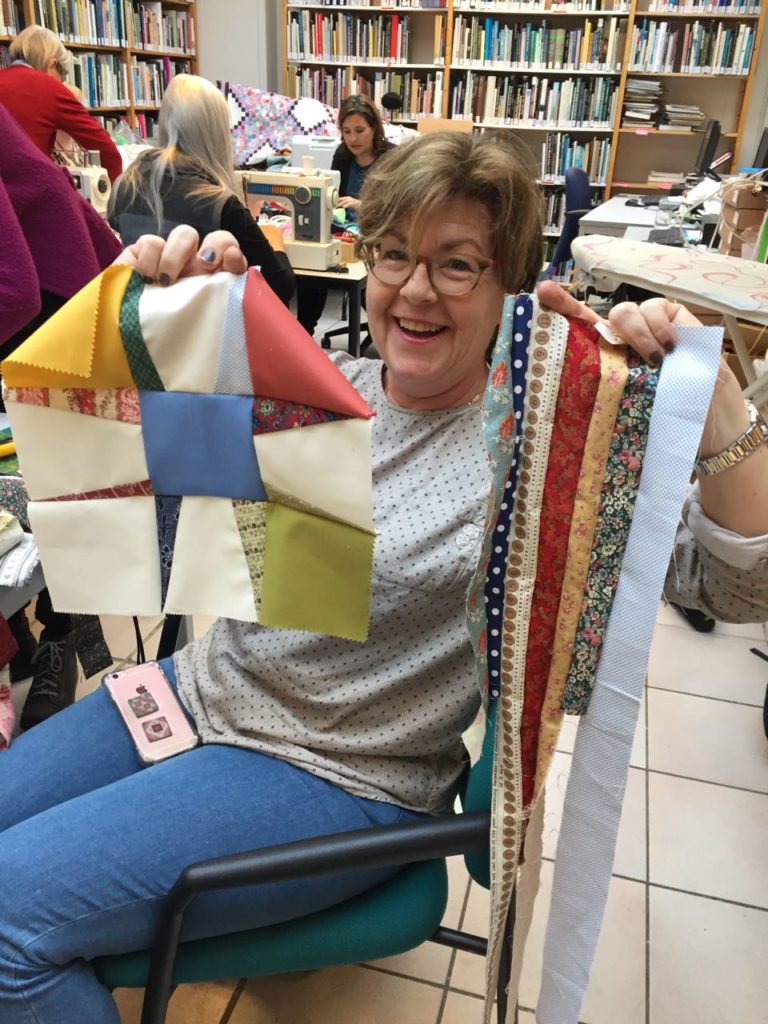 As always when I teach, I learned as much as my students. Quilting is tremendously popular in Holland and two of my students are board members of the national Dutch quilting guild, which has more than 11,000 members! One of my students is a glassblower, and another a master embroiderer who has stitched for the Dutch royals.
As always when I teach, I learned as much as my students. Quilting is tremendously popular in Holland and two of my students are board members of the national Dutch quilting guild, which has more than 11,000 members! One of my students is a glassblower, and another a master embroiderer who has stitched for the Dutch royals.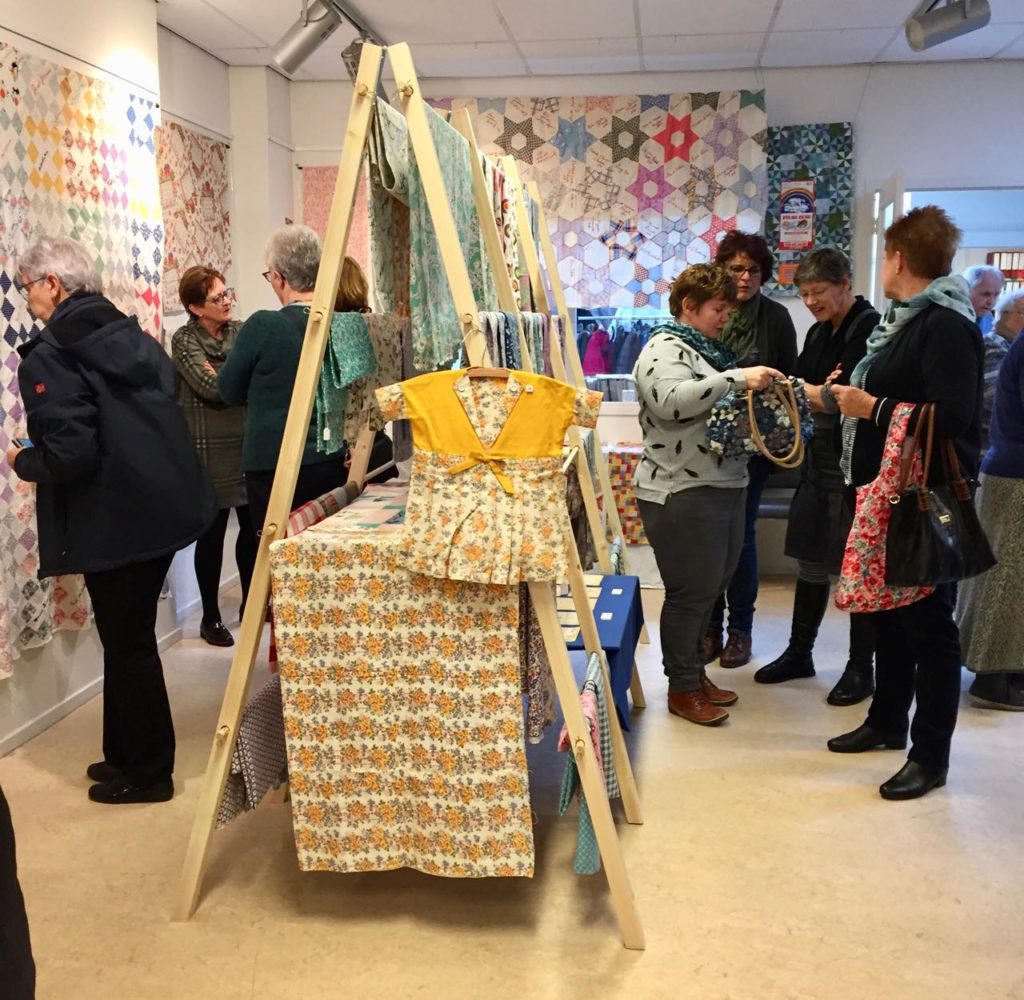
I was also surprised by the number of students who choose to hand piece their blocks.
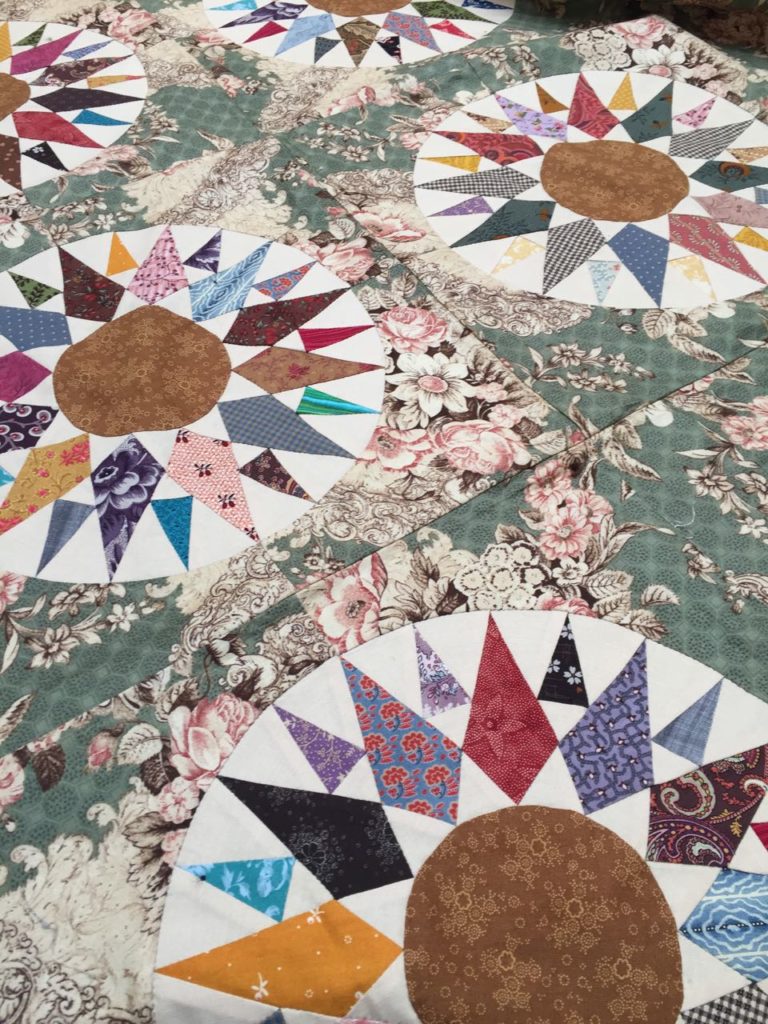 Hand-pieced Mariner's compass by Heidi Jie
Hand-pieced Mariner's compass by Heidi Jie
At first, I thought this might be because many people travel by train or bicycle, making it challenging to transport a sewing machine. (Some students DID bring their machines on their bikes!)
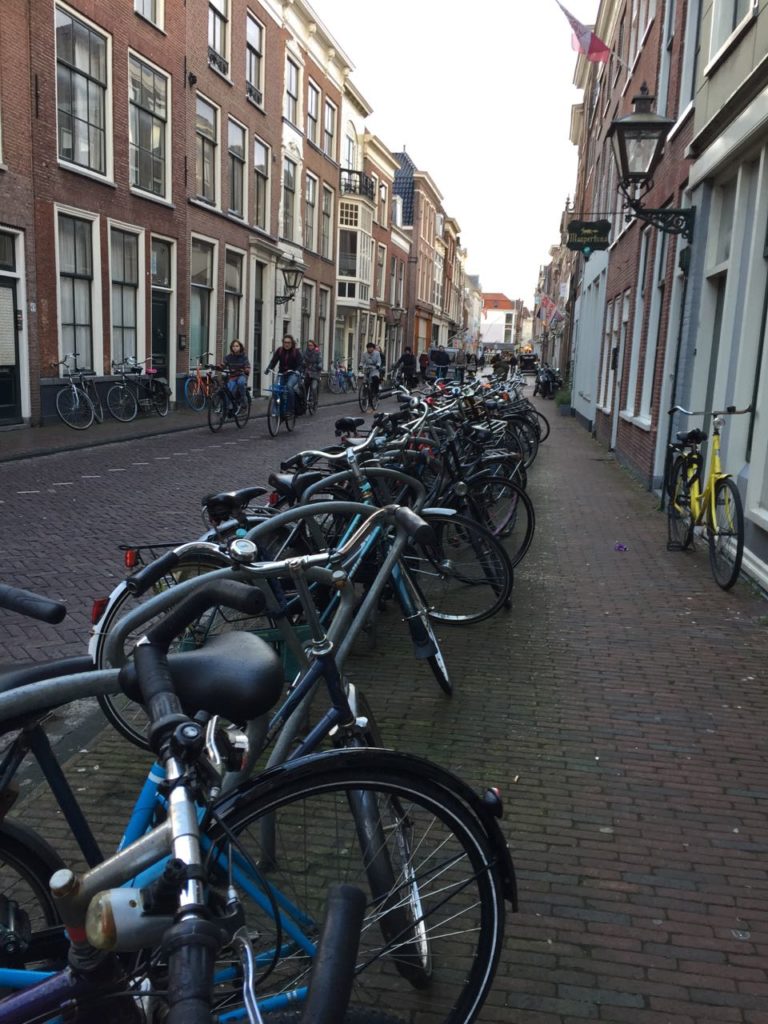 In Leiden, everyone biked, including a number of students who came to my class. Some even carried their sewing machine, cutting mat, rulers, and fabric on their bicycles.
In Leiden, everyone biked, including a number of students who came to my class. Some even carried their sewing machine, cutting mat, rulers, and fabric on their bicycles.
But six of the 16 students in one class chose to hand piece and said they always did. They enjoy hand piecing’s portability, its meditative quality, and the fact that the whir of machines didn’t interfere when chatting with friends. One quilter told me “I make one quilt a year,” and I was intrigued by that idea. Though I may not have the patience to sew an entire quilt by hand, my students inspired me to stitch hexagons together on the nine-hour flight home.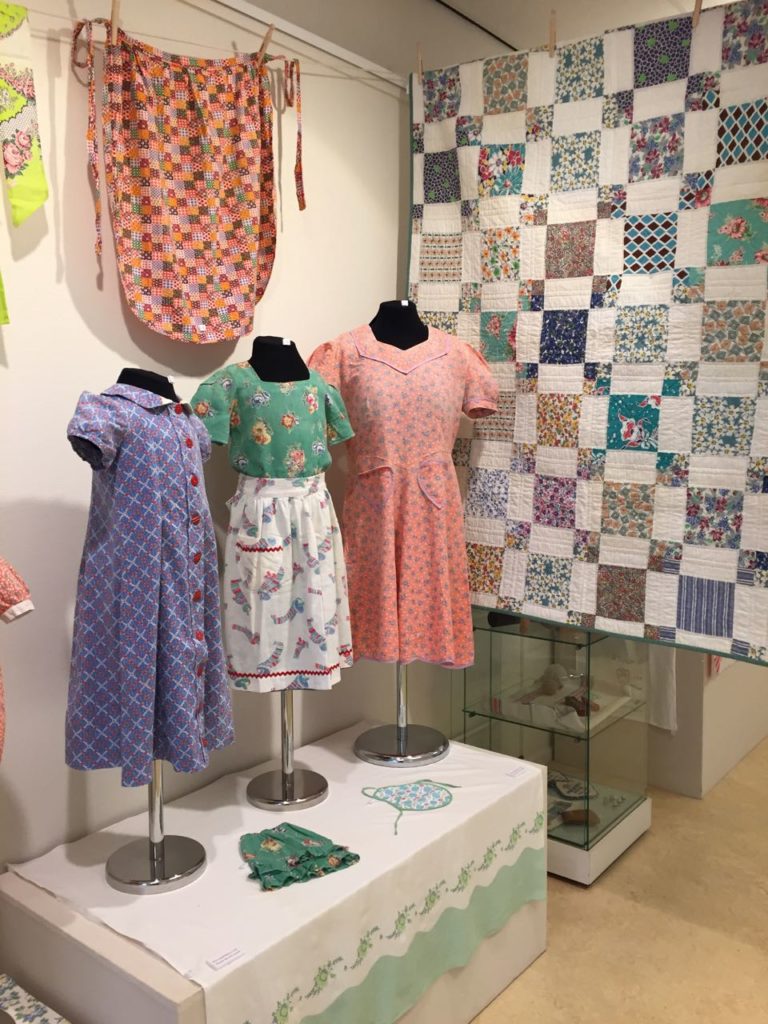
At the end of the week I was very tired, but very happy. The TRC is a tremendous resource—their web site includes Needles, a searchable "encyclopedia" of all-things embroidery, among other offerings—and I am so impressed by the volunteers who help tag, catalog, and digitize the items in the collection, run the shop, and keep the doors open for visitors. Spending time with other lovers of textiles was a reminder that no matter where we’re from, there is so much that we share.
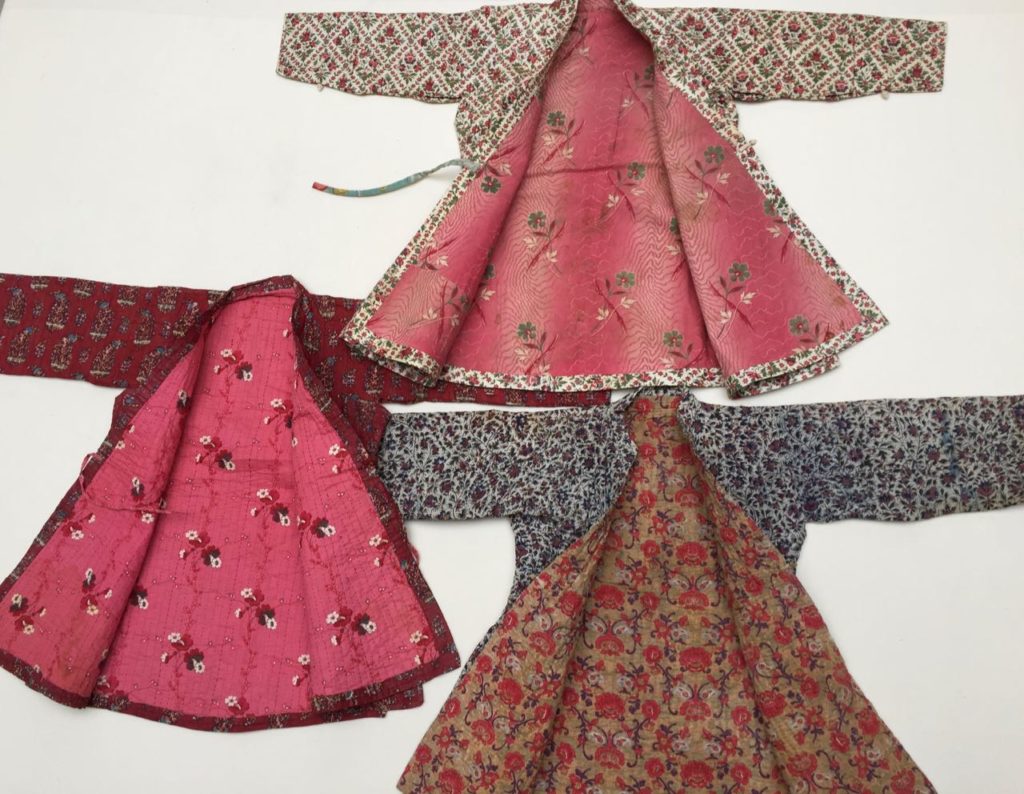 Quilted Iranian children's jackets
Quilted Iranian children's jackets
The TRC is hoping to create a focus as a center of quilting in Europe. This would include not only quilts, but all items that are quilted. For more information on the TRC, check their web site.
The exhibition For a Few Sacks More will on view at the TRC though June 28, 2018.

Comments